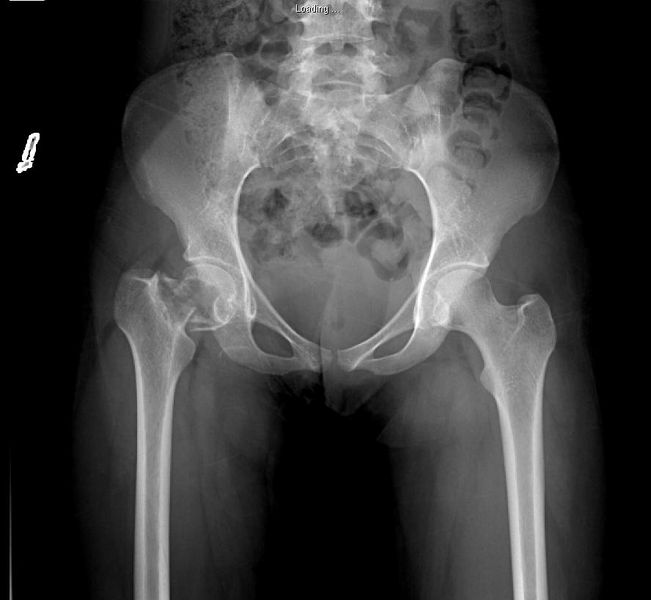AAOS classification of periprosthetic hip fracture

Editor-In-Chief: C. Michael Gibson, M.S., M.D. [1]; Associate Editor(s)-in-Chief: Mohammadmain Rezazadehsaatlou[2].
Overview[1][2][3]
The "hip" joint is known as a ball-and-socket joint. It allows the femur bone to bend and rotate at the pelvis. Comparing to the injuries to the knee, ankle, and shoulder which are well documented, injuries to the hip, pelvis, and thigh get little attentions due to their lower prevalence. A hip fracture is a known as a fracture of the upper quarter of the femur bone while any other types of injuries to the socket, or acetabulum, itself is not considered a "hip fracture." Management of fractures to the socket is a completely different consideration. The hip fracture count as a serious problems associated with serious and life-threatening complications. Hip fractures most commonly occur due to the:
Fall to the side of the hip A direct blow to the side of the hip Other medical conditions such as osteoporosis, cancer, or stress injuries affecting the strength. During fracture the most common site of fracture are:
The head of the femur The neck of the femur Between or below the greater trochanter and the lesser trochanters
Garden Classification
| Garden Classification | |
|---|---|
| Type I | undisplaced incomplete, including valgus impacted fractures
|
| Type II | undisplaced complete
|
| Type III | complete fracture, incompletely displaced
|
| Type IV | complete fracture, completely displaced
|
Related Chapters
References
- ↑ Collin PG, D'Antoni AV, Loukas M, Oskouian RJ, Tubbs RS (January 2017). "Hip fractures in the elderly-: A Clinical Anatomy Review". Clin Anat. 30 (1): 89–97. doi:10.1002/ca.22779. PMID 27576301.
- ↑ Rocos B, Whitehouse MR, Kelly MB (May 2017). "Resuscitation in hip fractures: a systematic review". BMJ Open. 7 (4): e015906. doi:10.1136/bmjopen-2017-015906. PMC 5623376. PMID 28473523.
- ↑ Bhandari M, Swiontkowski M (November 2017). "Management of Acute Hip Fracture". N. Engl. J. Med. 377 (21): 2053–2062. doi:10.1056/NEJMcp1611090. PMID 29166235.